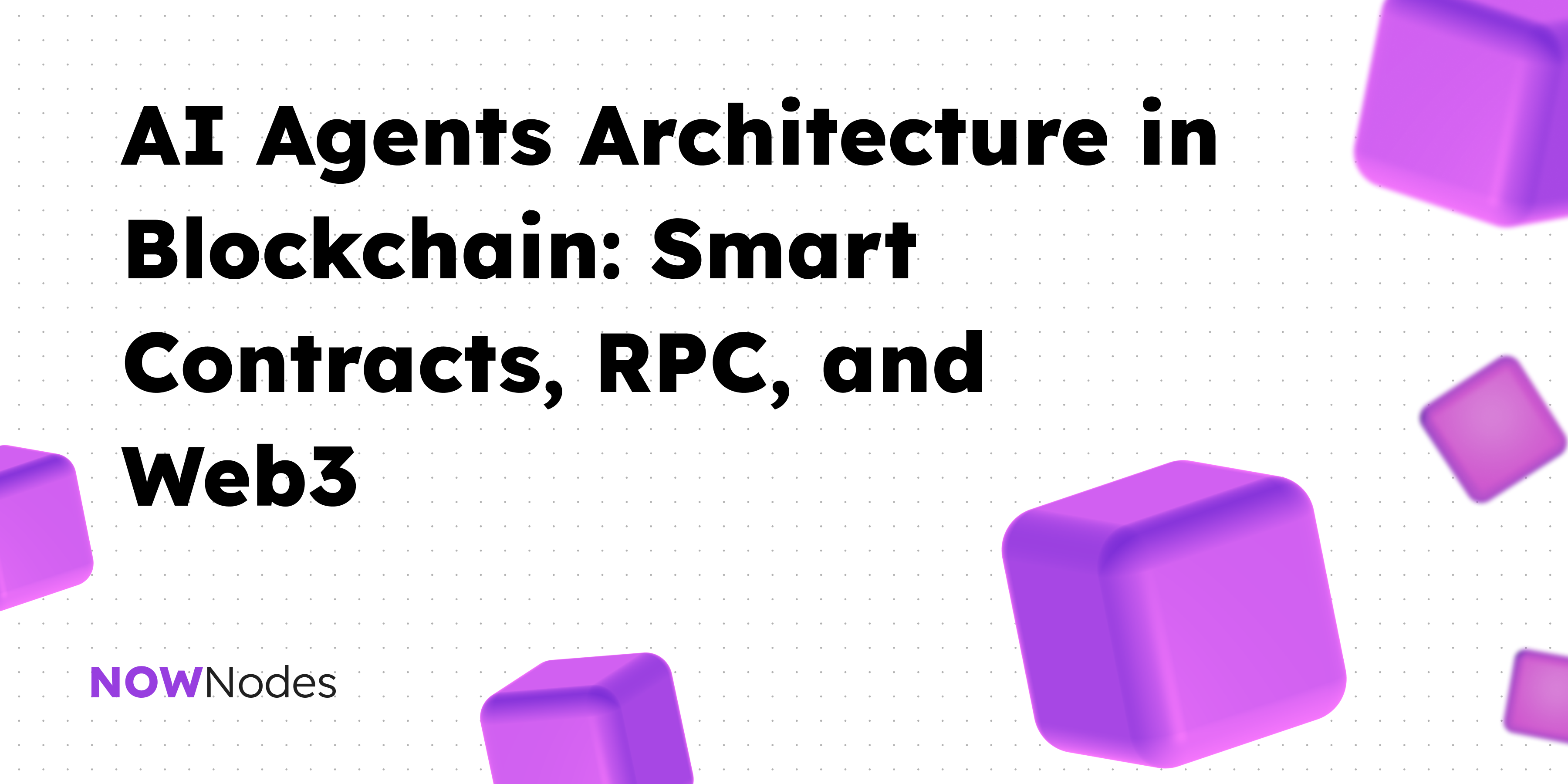AI Agents Architecture has already become an integral part of our daily lives! AI technologies are being incorporated into everything: from new iPhones to various applications. Cryptocurrencies are no exception. When we refer to AI agents in crypto, we’re talking about autonomous programs that interact with blockchain technologies, analyzing data, making decisions, and performing actions without human intervention. These AI agents can be applied to a range of tasks, from cryptocurrency trading to participating in votes within decentralized organizations (DAOs).
AI agents can operate in any blockchain environment, utilizing smart contracts to perform tasks and interact with other decentralized applications. Importantly, they are not dependent on centralized servers and autonomously ensure the execution of their tasks.
Why is This Relevant Now?
Why are AI Agents Architecture in blockchain a trend right now? The answer is simple: we live in an era where machine learning technologies (like GPT and other language models) have become significantly more powerful. Additionally, the Web3 infrastructure, including tools for interacting with blockchains, has become accessible and convenient to use.
Moreover, new solutions such as Layer 2 (e.g., Arbitrum and Optimism) address the issue of high transaction costs and network speed in Ethereum. This enables AI agents to work faster and cheaper, unlocking more opportunities for automation and the creation of useful tools.
AI Agent Architecture in Blockchain
Now, let’s break down what a typical AI agent in a blockchain environment consists of. It includes several key components that help it perform tasks autonomously and efficiently:
- The Brain: AI and Machine Learning
The brain of the AI agent is its intelligence. This is where the algorithms that analyze data and make decisions are located. Machine learning models or other AI models can be used so that the agent can “learn” from the data, identify patterns, and predict future events.
This allows agents to act based on large amounts of information and adapt to changes in real-time. For example, an AI agent can analyze the crypto market and decide when to buy or sell assets.
- Web3 Interface
To enable the AI Agents Architecture to interact with blockchain networks, it needs a connection through specialized tools known as RPC (Remote Procedure Call). Using libraries like ethers.js, web3.py, or tonweb, the agent can connect to the blockchain, send transactions, retrieve data, and interact with smart contracts.
Think of this as a bridge between the intelligent agent and the network, allowing it to “understand” what’s happening in the blockchain and make decisions based on that information.
- Key Management
Each AI agent has its “keys”- digital signatures that confirm its right to perform transactions. These keys are necessary for signing actions like sending cryptocurrency or executing smart contracts.
The keys can be stored in wallets or secure storage, and it’s essential that they are protected from external threats.
- Smart Contracts
Smart contracts are programs that execute directly on the blockchain. They enable AI agents to perform actions such as cryptocurrency exchange, voting participation, or automatic fund transfers, all without human involvement.
Through smart contracts, AI agents can interact with decentralized finance (DeFi) applications or manage liquidity across different platforms.
Where AI Agents Can Work
AI agents can operate in different environments depending on how they are set up:
- Off-chain agents: These agents work outside the blockchain. They receive data from the blockchain, analyze it, and make decisions, but all computations and logic happen off the network. This gives agents more flexibility and allows them to process data faster and at lower costs.
- On-chain agents: These agents work directly inside the blockchain, where all their logic and actions are recorded in smart contracts. This means the agent performs its actions within the network and doesn’t depend on external servers. On-chain agents are ideal for automating simple tasks, such as voting or monitoring.
Blockchains and Platforms for Deploying AI Agents
Depending on the tasks assigned to the AI agent, it’s possible to choose an appropriate blockchain for its operation. Here are some popular options:
- Ethereum: Ethereum is the primary platform for most AI agents. It supports everything needed: from DeFi protocols to DAOs and NFTs. However, high transaction costs and limited data processing speeds might become an issue if the agent deals with large amounts of data.
- Layer 2 Solutions: Arbitrum, Optimism, Base: Layer 2 solutions are technologies that address the high costs and speeds of Ethereum. Arbitrum and Optimism enable faster and cheaper transactions, making them an excellent choice for agents requiring high activity, such as for trading or analytics.
- BNB Chain: If you need something faster and cheaper than Ethereum but still with extensive DeFi and farming opportunities, BNB Chain is an excellent choice. It allows efficient agents for arbitrage and other operations where transaction speed and cost are crucial.
- Polygon: Polygon is another blockchain compatible with Ethereum but with lower transaction costs. This is the perfect choice for NFTs, games, and applications with low transaction fees, making it suitable for AI agents as well.
- TON: TON (The Open Network) is a blockchain that gained popularity thanks to its integration with Telegram. You can create a Telegram bot that works with TON wallets, manages assets, and performs trading operations directly from the chat. For such projects, using tonweb and tonconnect is ideal.
Conclusion
AI agents are the future of the blockchain environment. These intelligent programs can be beneficial in various areas, from trading and arbitrage to interacting with DAOs and DeFi protocols. The idea of automating processes like voting, cryptocurrency exchange, and participation in various applications opens up new horizons for all participants in the Web3 ecosystem.
If you want to try your hand at it, create your first AI agent. Today, it’s easier than ever. Blockchains and tools to work with them are ready for new experiments-the only thing left is to take the first step!



